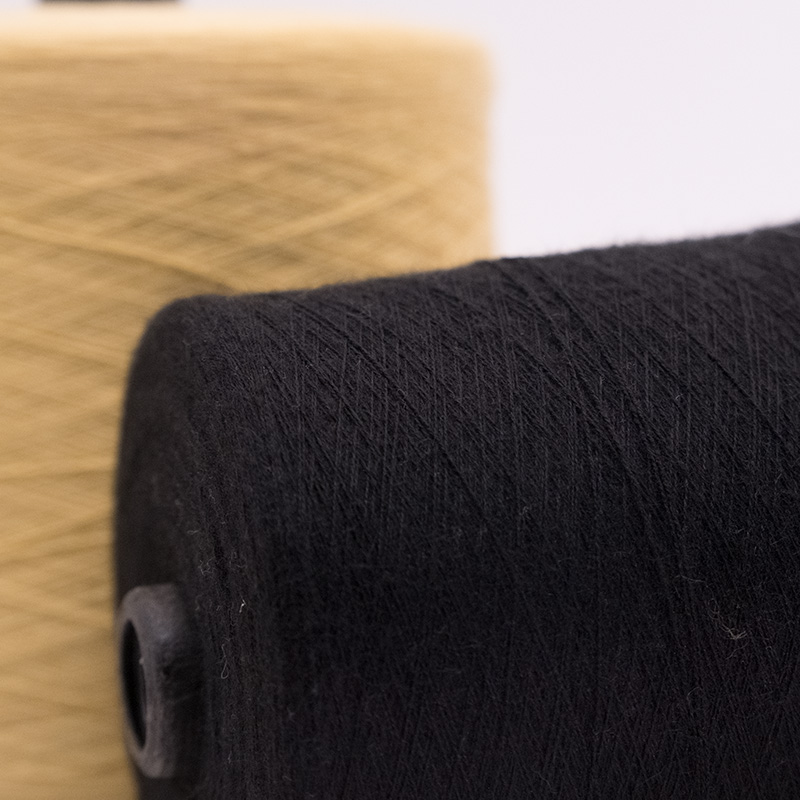Optimizing Vortex Spun Yarn: Fiber Blends and Finishing Techniques
2025-03-24
Vortex spun yarn has gained immense popularity in the textile industry due to its superior elasticity, smooth handfeel, and resistance to pilling. However, to fully unleash its potential, manufacturers must carefully consider both fiber blending ratios and post-spinning finishing treatments. These factors directly impact yarn performance, influencing everything from softness to durability, making them crucial elements in the production of high-quality fabrics.
Impact of Fiber Blends on Vortex Spun Yarn Performance
The choice of fibers and their blending ratios play a decisive role in defining the final characteristics of vortex spun yarn. Blending natural and synthetic fibers can enhance specific properties while maintaining the inherent advantages of vortex spinning. For instance, incorporating a higher percentage of cotton ensures breathability and moisture absorption, making the yarn ideal for lightweight summer fabrics. On the other hand, blending with polyester or other synthetic fibers improves strength and wrinkle resistance, extending the lifespan of garments made from vortex spun yarn.
Another strategic blend involves adding a portion of lyocell or bamboo fiber to enhance the yarn’s sustainability and softness. These eco-friendly fibers complement the vortex spinning process by providing a silkier touch without compromising durability. Wool blends are also becoming increasingly common in vortex spinning, offering a balance between warmth and elasticity while reducing the tendency for pilling, which is a common concern with traditional woolen yarns. The correct blending ratio largely depends on the intended end-use, whether it's for stretchable sportswear, luxurious knitwear, or durable home textiles.
Finishing Techniques to Enhance Elasticity and Softness
Beyond fiber selection, finishing treatments play a vital role in refining the texture and overall quality of vortex spun yarn. One of the most effective techniques is enzyme treatment, which helps eliminate surface fuzz, resulting in a smoother yarn with a silk-like touch. This process also enhances color brightness, making the yarn more appealing for high-end fashion applications.
Another innovative approach is the use of silicone softeners, which further boost the softness and elasticity of vortex spun yarn. These finishing agents coat the fiber surface, providing an ultra-soft feel while maintaining the yarn’s signature strength and durability. Additionally, advanced moisture-wicking treatments are commonly applied to enhance performance in activewear, ensuring that fabrics remain breathable and comfortable even under intense physical activity.

For manufacturers targeting premium markets, special finishing techniques such as nano-coatings or plasma treatments can offer additional functionalities like anti-static properties, UV protection, or even antimicrobial effects. These refinements elevate vortex spun yarn beyond standard applications, making it a preferred choice for performance textiles and high-fashion garments alike.
Achieving the Perfect Balance
Optimizing vortex spun yarn requires a fine-tuned approach that balances fiber blending with finishing treatments. By carefully selecting fiber compositions, manufacturers can customize yarn performance to meet diverse industry needs, from lightweight, breathable fabrics to highly durable and elastic textiles. At the same time, applying the right finishing processes can elevate the yarn’s softness, longevity, and functional properties, making it even more versatile across different applications.
As the demand for innovative textiles grows, vortex spinning continues to push the boundaries of fabric performance. With the right combinations of fibers and finishes, manufacturers can maximize the advantages of vortex spun yarn, ensuring that it remains a top choice for both high-end fashion and technical textile applications.



 English
English русский
русский Español
Español 中文简体
中文简体

















